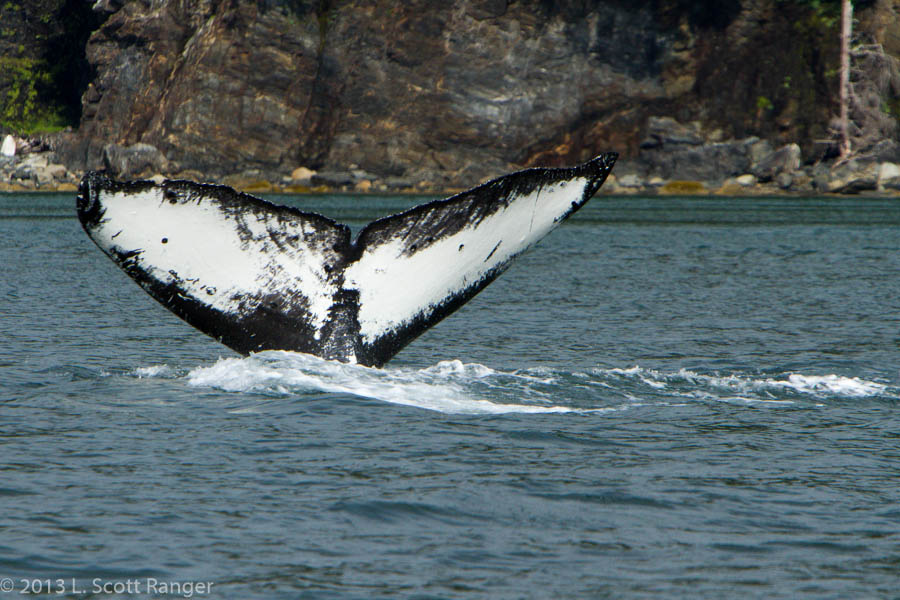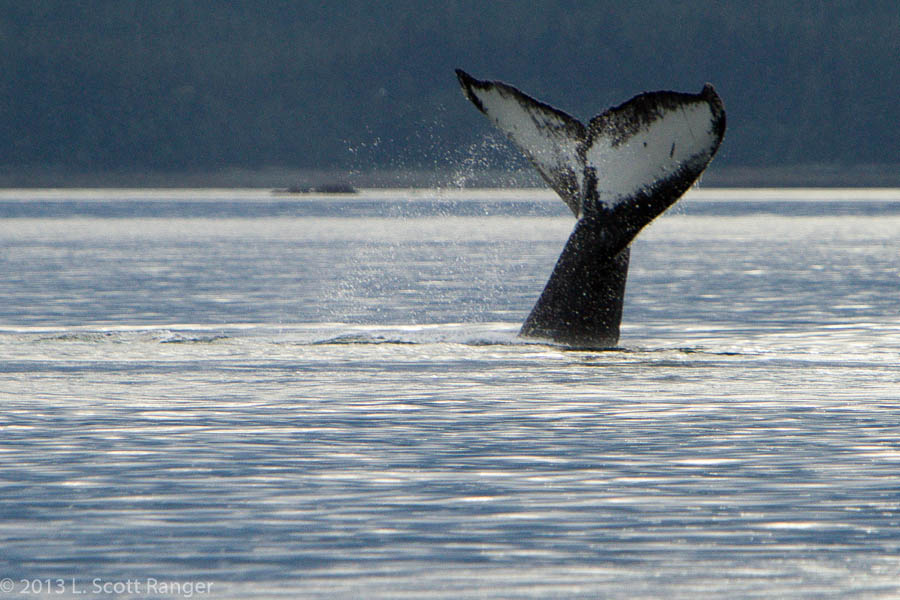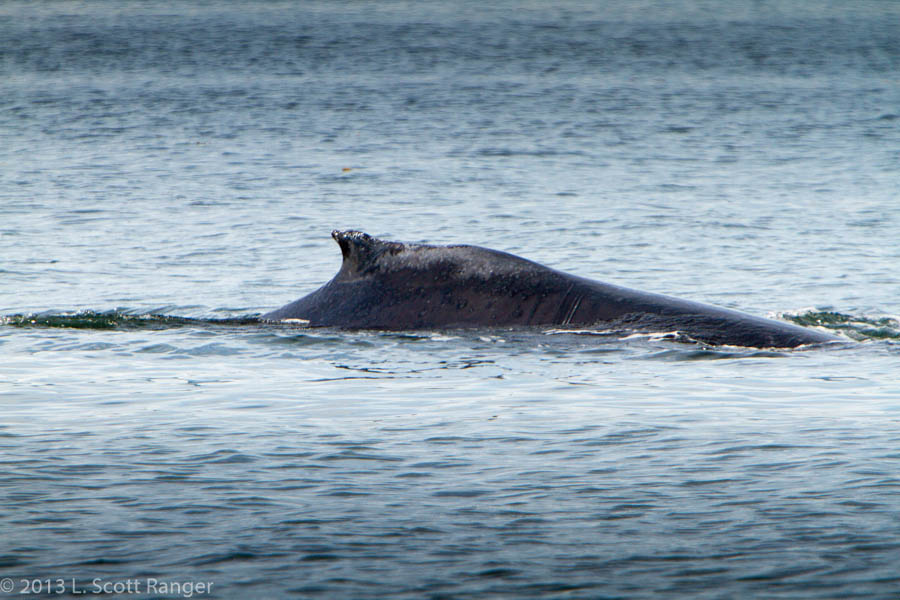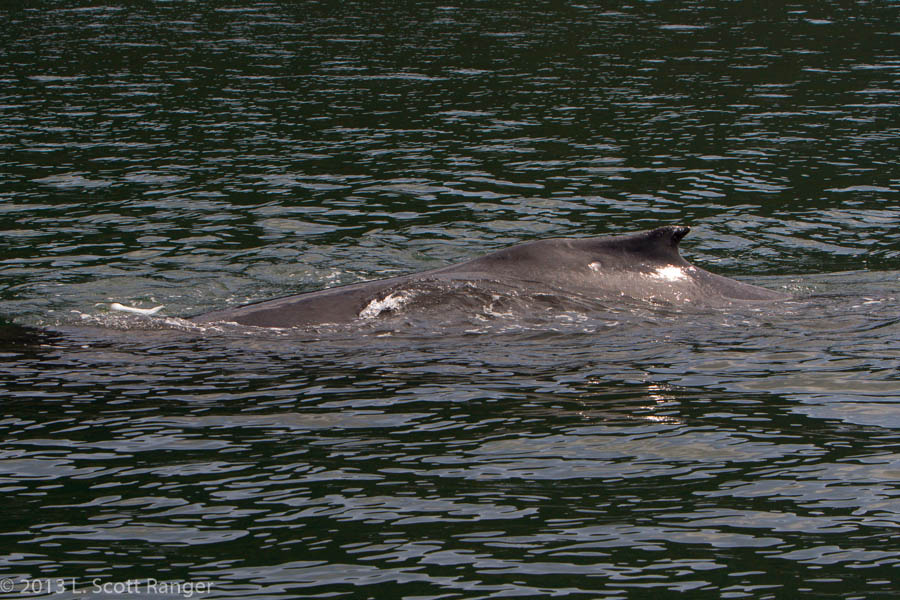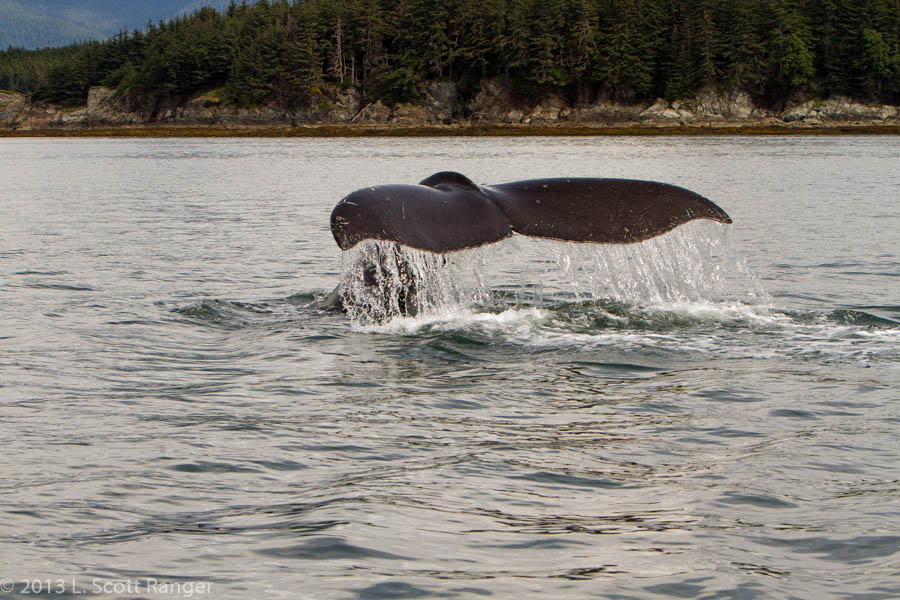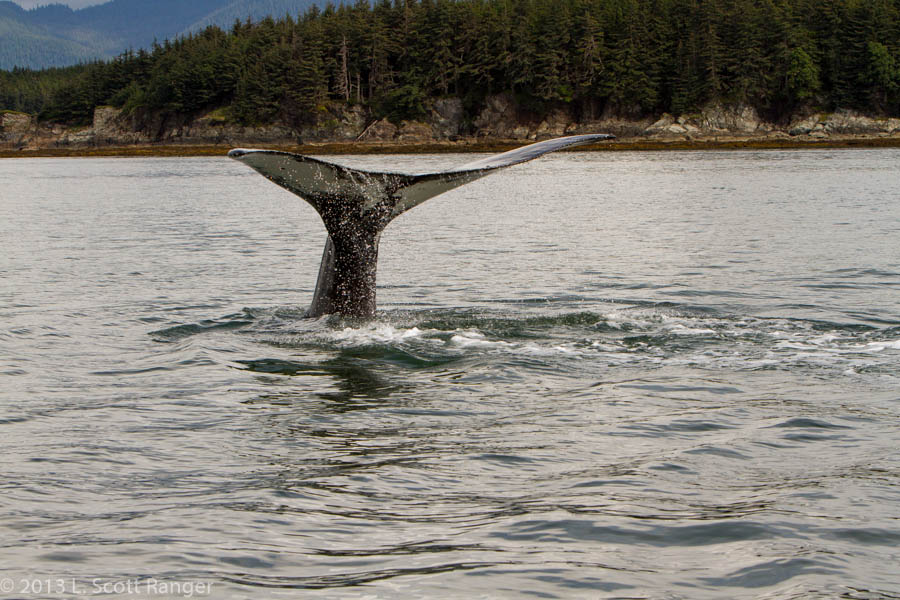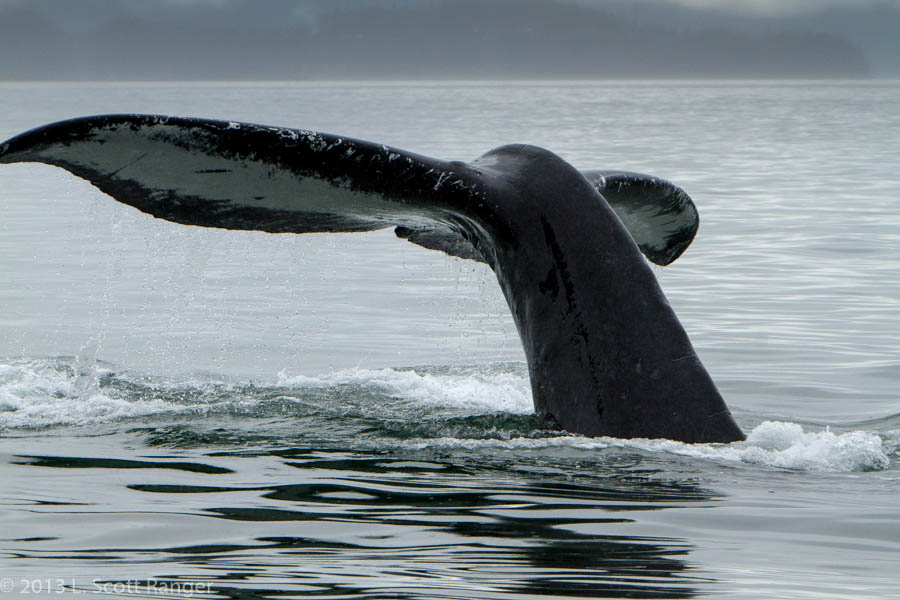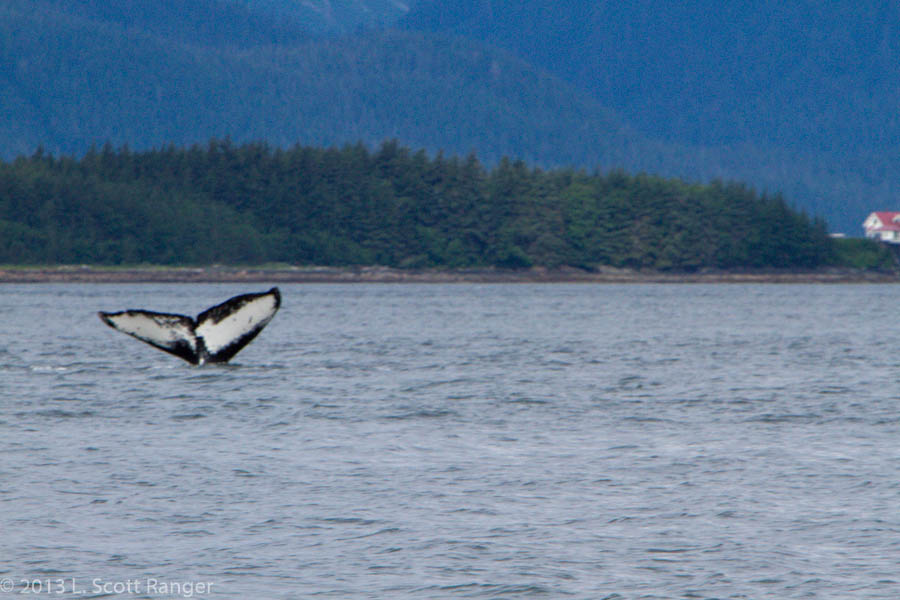1538, Flame
With her big, white tail, Flame is a favorite. Easily recognized by the smudge of gray and black along the trailing edge of her right fluke (that gives her the less-used name "Smudge"). I look for the black block that narrows from the peduncle (end the the backbone at the tail), the small black dot on the left fluke and the black line on the right fluke.
First cataloged in 2007, she's seen every year in the waters surrounding Shelter Island where I've seen her everywhere. I've never seen her in a bubble netting group nor have I seen her breach. She does dive very gracefully and show that wonderful tail.
First cataloged in 2007, she's seen every year in the waters surrounding Shelter Island where I've seen her everywhere. I've never seen her in a bubble netting group nor have I seen her breach. She does dive very gracefully and show that wonderful tail.
|
On August 25, 2010 she did a set of three tail slaps up Favorite Channel not far from Cohen Reef. Here she shows the unique form while flipping up her tail, ready to slap it down on the water. Most of the juvenile whales do this from the dorsal (back) side, but here Flame is doing it from the ventral (front) side as most adults do.
Why tail slap (also called a tail lob)? This behavior is unexplained, but some think it is an aggressive warning for others to stay away while the opposite is suggested by some as an invitation for others to come and join. We don't know why they tail slap. |
Most of our adult humpbacks have rather squared-off or blocky dorsal fins. Flame has a sharply pointed one, like a mini-racing fin. The photo on the left from July 12, 2012 shows an area just forward of the dorsal fin that is distinctly colored a much lighter gray that the photo from August 10, 2912 (right) does not show. This is evidence that this is some sort of transient dermatological event on her skin, but what is it?
This diving sequence from August 10,2012 illustrates just how well this girl "shows tail".
Sometimes this girl comes really close, as she did on August 18, 2012 just south of Halibut Cove in the center of Favorite Channel.
|
So for 2013 Flame shows up with a calf and is very active, but for only a few days. I have only this one photo of her from July 6 and all of my calf photos are from only two days, July 2 and 6. What happened to the two of them? Where did they go? Flame most of the summer of 2012 in our waters, but this year she came early season and left. I'd sure love to know where she went.
|
